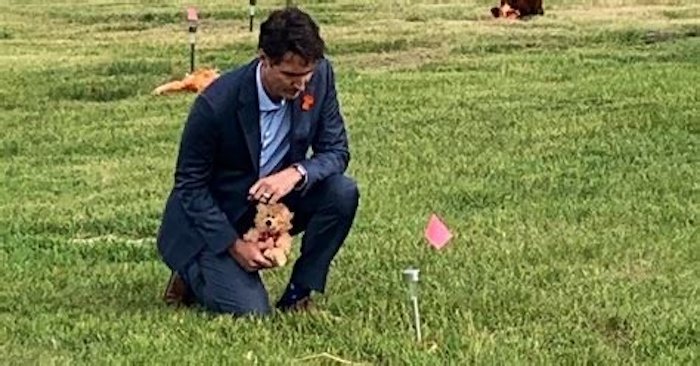Uncategorized
3 groups, many videos, many interpretations of DC encounter

A group of five black men shouting vulgar insults while protesting centuries of oppression. Dozens of white Catholic high school students visiting Washington for a rally to end abortion. And Native Americans marching to end injustice for indigenous peoples across the globe who have seen their lands overrun by outside settlers.
The three groups met for just a few minutes Friday at the base of the Lincoln Memorial, an encounter captured in videos that went viral over the weekend — and again cast a spotlight on a polarized nation that doesn’t appear to agree on anything.
At first the focus was on a short video showing one of the high school students, Nick Sandmann, wearing a red “Make America Great Again” hat and appearing to smirk while a crowd of other teens laughed derisively behind him, as he faced off against a 64-year-old Native American, Nathan Phillips, who played a traditional chant on a drum.
Pull back further and a different view emerged, however, in a separate video showing members of a group calling itself the Black Hebrew Israelites taunting everyone on the mall that day, calling the Native Americans who had gathered there for the Indigenous Peoples March “Uncle Tomahawks” and “$5 Indians” and the high school students “crackers” and worse.
It was an ugly encounter of spewed epithets but one that nevertheless ended with no punches thrown or other violence.
Still, the videos were all over social media, again appearing to illustrate a nation of such deep divisions — racial, religious and ideological — that no one was willing to listen to the others’ point of view. Add to that the political tensions spilling over from a government shutdown that has gone on for a month and the stage was set for a viral moment.
But in this case, the videos didn’t tell the whole story, all the parties involved agree.
“I would caution everyone passing judgment based on a few seconds of video to watch the longer video clips that are on the internet, as they show a much different story than is being portrayed by people with agendas,” Sandmann, a junior, said in a statement released late Sunday.
Sandmann’s statement does seem at odds with some video from the confrontation that showed students from his school, Covington Catholic High in Park Hills, Kentucky, laughing at Phillips’ Native American group and mockingly singing along with him, as well as interviews with Phillips who said he heard the students shout “Build that wall!” and “Go back to the reservation!”
The fullest view of what happened that Friday afternoon came from a nearly two-hour video posted on Facebook by Shar Yaqataz Banyamyan. It showed members of his Black Hebrew Israelite group repeatedly interacting with the crowd as people from the Indigenous Peoples March and the high school students vigorously argued with them for a few minutes.
Sandmann said in his statement the students from his all-male high school were waiting for their buses near Banyamyan’s group when the latter started to taunt them. One of the students took off his shirt and the teens started to do a haka — a war dance of New Zealand’s indigenous Maori culture, made famous by the country’s national rugby team.
Phillips, an elder of the Omaha tribe, and Marcus Frejo, a member of the Pawnee and Seminole tribes, said they felt the students were mocking the dance and walked over to intervene.
Phillips and Sandmann locked eyes, their faces inches apart. Both men said their goal was simply to make sure things didn’t get out of hand. But caught on video, the encounter still went viral.
The high school students felt they were unfairly portrayed as villains in a situation where they say they were not the provocateurs.
“I am being called every name in the book, including a racist, and I will not stand for this mob-like character assassination,” Sandmann said in his statement.
The Roman Catholic Diocese of Covington apologized for the incident, promising an investigation that could lead to punishment up to expulsion if any wrongdoing by the students was determined.
The Indigenous Peoples Movement felt the encounter was a reminder the U.S. was founded on racism and President Donald Trump’s presidency is rekindling hatred based on skin
“Trump has riled up a reactionary voting block that reminds us that we are a nation founded on patriarchy, genocide and racism. Trump is clearly giving these archaic instincts license, encouraging the kind of aggressive goading that I witnessed,” movement spokesman Chase Iron Eyes said in a statement.
Trump himself weighed in Monday night as some news reports questioned whether the early criticism of the students was warranted. The president tweeted, in part: “Looking like Nick Sandman & Covington Catholic students were treated unfairly with early judgements proving out to be false – smeared by media. Not good, but making big comeback!”
Banyamyan posted his own reaction on Facebook, referencing the dozens of high school students in their Make America Great Again gear coming over to his group of five and chanting. In a rambling video, he also praised Phillips and compared Sandmann to the devil.
After the sun set and the Covington high school students left, Banyamyan’s video showed a few police officers stopping by to check on his group as they were wrapping up their protest. One of the officers said they were worried by the number of people that briefly massed in that one spot. One of the Black Hebrew Israelites said there were no problems.
“We weren’t threatened by them,” he said. “It was an OK dialogue.”
Jeffrey Collins, The Associated Press
Uncategorized
Cost of bureaucracy balloons 80 per cent in 10 years: Public Accounts
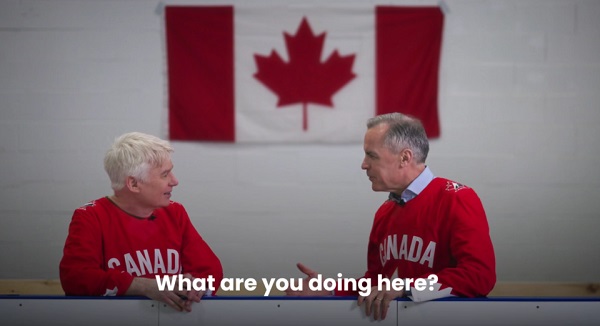
The cost of the bureaucracy increased by $6 billion last year, according to newly released numbers in Public Accounts disclosures. The Canadian Taxpayers Federation is calling on Prime Minister Mark Carney to immediately shrink the bureaucracy.
“The Public Accounts show the cost of the federal bureaucracy is out of control,” said Franco Terrazzano, CTF Federal Director. “Tinkering around the edges won’t cut it, Carney needs to take urgent action to shrink the bloated federal bureaucracy.”
The federal bureaucracy cost taxpayers $71.4 billion in 2024-25, according to the Public Accounts. The cost of the federal bureaucracy increased by $6 billion, or more than nine per cent, over the last year.
The federal bureaucracy cost taxpayers $39.6 billion in 2015-16, according to the Public Accounts. That means the cost of the federal bureaucracy increased 80 per cent over the last 10 years. The government added 99,000 extra bureaucrats between 2015-16 and 2024-25.
Half of Canadians say federal services have gotten worse since 2016, despite the massive increase in the federal bureaucracy, according to a Leger poll.
Not only has the size of the bureaucracy increased, the cost of consultants, contractors and outsourcing has increased as well. The government spent $23.1 billion on “professional and special services” last year, according to the Public Accounts. That’s an 11 per cent increase over the previous year. The government’s spending on professional and special services more than doubled since 2015-16.
“Taxpayers should not be paying way more for in-house government bureaucrats and way more for outside help,” Terrazzano said. “Mere promises to find minor savings in the federal bureaucracy won’t fix Canada’s finances.
“Taxpayers need Carney to take urgent action and significantly cut the number of bureaucrats now.”
Table: Cost of bureaucracy and professional and special services, Public Accounts
| Year | Bureaucracy | Professional and special services |
|
$71,369,677,000 |
$23,145,218,000 |
|
|
$65,326,643,000 |
$20,771,477,000 |
|
|
$56,467,851,000 |
$18,591,373,000 |
|
|
$60,676,243,000 |
$17,511,078,000 |
|
|
$52,984,272,000 |
$14,720,455,000 |
|
|
$46,349,166,000 |
$13,334,341,000 |
|
|
$46,131,628,000 |
$12,940,395,000 |
|
|
$45,262,821,000 |
$12,950,619,000 |
|
|
$38,909,594,000 |
$11,910,257,000 |
|
|
$39,616,656,000 |
$11,082,974,000 |
Uncategorized
Trump Admin Establishing Council To Make Buildings Beautiful Again
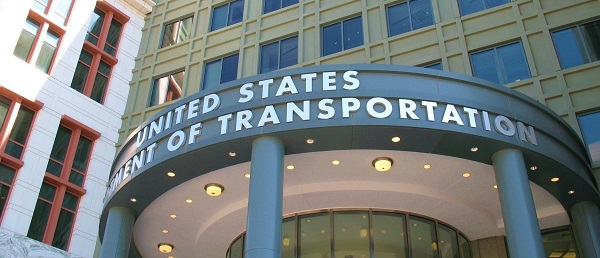

From the Daily Caller News Foundation
By Jason Hopkins
The Trump administration is creating a first-of-its-kind task force aimed at ushering in a new “Golden Age” of beautiful infrastructure across the U.S.
The Department of Transportation (DOT) will announce the establishment of the Beautifying Transportation Infrastructure Council (BTIC) on Thursday, the Daily Caller News Foundation exclusively learned. The BTIC seeks to advise Transportation Secretary Sean Duffy on design and policy ideas for key infrastructure projects, including highways, bridges and transit hubs.
“What happened to our country’s proud tradition of building great, big, beautiful things?” Duffy said in a statement shared with the DCNF. “It’s time the design for America’s latest infrastructure projects reflects our nation’s strength, pride, and promise.”
“We’re engaging the best and brightest minds in architectural design and engineering to make beautiful structures that move you and bring about a new Golden Age of Transportation,” Duffy continued.
Mini scoop – here is the DOT’s rollout of its Beautifying Transportation Infrastructure Council, which will be tasked with making our buildings beautiful again. pic.twitter.com/
9iV2xSxdJM — Jason Hopkins (@jasonhopkinsdc) October 23, 2025
The DOT is encouraging nominations of the country’s best architects, urban planners, artists and others to serve on the council, according to the department. While ensuring that efficiency and safety remain a top priority, the BTIC will provide guidance on projects that “enhance” public areas and develop aesthetic performance metrics.
The new council aligns with an executive order signed by President Donald Trump in August 2025 regarding infrastructure. The “Making Federal Architecture Beautiful Again” order calls for federal public buildings in the country to “respect regional architectural heritage” and aims to prevent federal construction projects from using modernist and brutalist architecture styles, instead returning to a classical style.
“The Founders, in line with great societies before them, attached great importance to Federal civic architecture,” Trump’s order stated. “They wanted America’s public buildings to inspire the American people and encourage civic virtue.”
“President George Washington and Secretary of State Thomas Jefferson consciously modeled the most important buildings in Washington, D.C., on the classical architecture of ancient Athens and Rome,” the order continued. “Because of their proven ability to meet these requirements, classical and traditional architecture are preferred modes of architectural design.”
The DOT invested millions in major infrastructure projects since Trump’s return to the White House. Duffy announced in August a $43 million transformation initiative of the New York Penn Station in New York City and in September unveiledmajor progress in the rehabilitation and modernization of Washington Union Station in Washington, D.C.
The BTIC will comprise up to 11 members who will serve two-year terms, with the chance to be reappointed, according to the DOT. The task force will meet biannually. The deadline for nominations will end Nov. 21.
-

 Daily Caller1 day ago
Daily Caller1 day agoParis Climate Deal Now Decade-Old Disaster
-

 armed forces2 days ago
armed forces2 days agoOttawa’s Newly Released Defence Plan Crosses a Dangerous Line
-
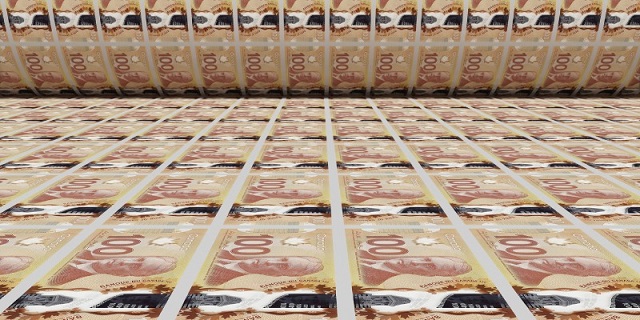
 Business20 hours ago
Business20 hours agoOttawa Pretends To Pivot But Keeps Spending Like Trudeau
-
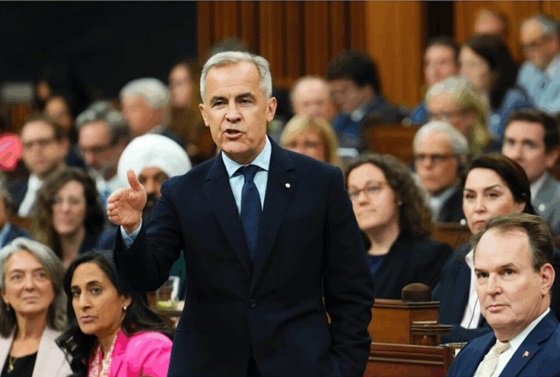
 Energy19 hours ago
Energy19 hours agoLiberals Twisted Themselves Into Pretzels Over Their Own Pipeline MOU
-

 Censorship Industrial Complex17 hours ago
Censorship Industrial Complex17 hours agoHow Wikipedia Got Captured: Leftist Editors & Foreign Influence On Internet’s Biggest Source of Info
-

 Alberta1 day ago
Alberta1 day agoAlberta’s huge oil sands reserves dwarf U.S. shale
-

 International1 day ago
International1 day agoFBI didn’t think it had cause to raid Trump but DOJ did it anyway
-

 Community2 days ago
Community2 days agoCharitable giving on the decline in Canada










